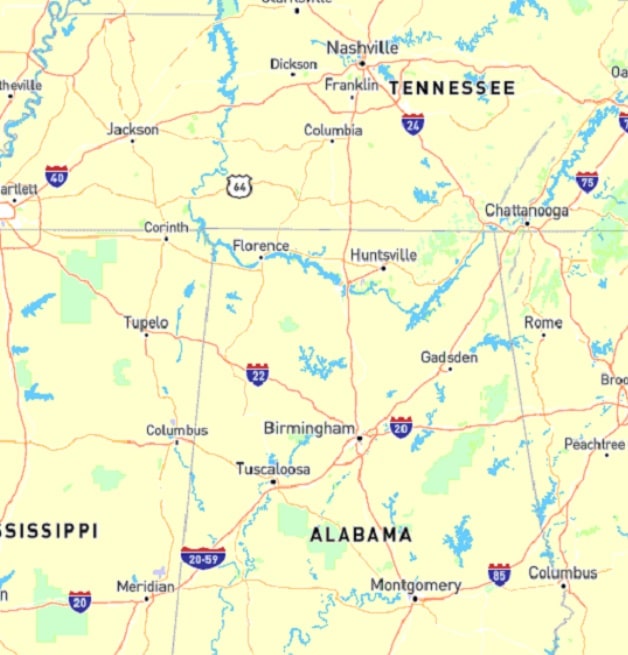Tucson, Arizona vs Mesa, Arizona Population and Size Compared
When exploring cities in Arizona, Tucson and Mesa stand out as significant urban centers with distinct characteristics and lifestyles. Tucson, known for its rich cultural heritage and beautiful desert landscapes, contrasts with Mesa, which boasts a family-friendly atmosphere and robust growth. This comparison will examine their populations, geographical sizes, economic opportunities, and quality of life.
Location and Historical Context
- Tucson, Arizona: Located in the southern part of the state, about 60 miles northwest of the U.S.-Mexico border, Tucson is the second-largest city in Arizona. Founded in 1775 as a military fort, Tucson has a rich history influenced by Native American, Spanish, and Mexican cultures. The city is surrounded by five mountain ranges, providing stunning natural scenery and recreational opportunities.
- Mesa, Arizona: Mesa is situated in the central part of Arizona, just east of Phoenix. Founded in the late 19th century, Mesa was originally a farming community, utilizing the water from the nearby Salt River. Over the years, it has grown into the third-largest city in Arizona, known for its family-oriented environment and suburban feel.
Population and Demographics
- Tucson: As of the latest estimates, Tucson has a population of approximately 550,000 residents. The city is ethnically diverse, with a significant Hispanic population, and has a relatively young demographic, with a median age of around 34 years. Tucson’s population includes a substantial number of college students due to the presence of the University of Arizona.
- Mesa: Mesa has a population of about 520,000 residents, making it one of the largest cities in Arizona. The demographic in Mesa is diverse but leans slightly older than Tucson, with a median age of around 37 years. The city has a mix of families, retirees, and young professionals, contributing to its vibrant community.
Economy and Job Opportunities
- Tucson: Tucson’s economy is diverse, with significant contributions from sectors such as education, healthcare, manufacturing, and tourism. Major employers include the University of Arizona, Raytheon Missile Systems, and the Davis-Monthan Air Force Base. The city also has a growing tech sector, attracting startups and innovation.
- Mesa: Mesa has a strong economy driven by various industries, including aerospace, healthcare, education, and technology. Major employers in the area include Boeing, Banner Health, and the Mesa Public School District. The city’s economic growth has led to increased job opportunities, particularly in healthcare and education.
Education and Quality of Teaching
- Tucson: Tucson is home to the University of Arizona, a major research institution that offers a wide range of undergraduate and graduate programs. The public school system in Tucson is diverse, with several high-performing schools. The city also offers access to community colleges and vocational training programs.
- Mesa: Mesa has a well-regarded public school system, with several schools receiving high ratings for academic performance. The city is also home to Mesa Community College and has access to nearby universities such as Arizona State University. The focus on education is a key aspect of Mesa’s community appeal.
Infrastructure and Transportation
- Tucson: Tucson has a developed infrastructure with a mix of public transportation options, including buses operated by Sun Tran. The city is also bike-friendly, with numerous bike lanes and paths. Tucson International Airport serves the city, providing access to various domestic and some international flights.
- Mesa: Mesa has a comprehensive transportation network, including the Valley Metro light rail system, which connects residents to Phoenix and other nearby areas. The city is well-connected via major highways, making commuting easy. Mesa also has a regional airport, Phoenix-Mesa Gateway Airport, which handles both commercial and private flights.
Culture and Leisure
- Tucson: Tucson boasts a rich cultural scene, influenced by its history and diverse population. The city hosts numerous festivals and events throughout the year, such as the Tucson Gem & Mineral Show and the Tucson Folk Festival. Attractions include the Arizona-Sonora Desert Museum, Saguaro National Park, and various art galleries and museums.
- Mesa: Mesa offers a variety of cultural activities, including the Mesa Arts Center, which hosts performances and art exhibitions. The city also has several parks, recreational facilities, and outdoor spaces for residents to enjoy. Events such as the Mesa Music Festival and the Arizona Renaissance Festival add to the city’s vibrant cultural scene.
Quality of Life and Cost of Living
- Tucson: The quality of life in Tucson is generally high, with a relatively low cost of living compared to other major cities in Arizona. The city offers a variety of housing options, from historic neighborhoods to modern developments. Tucson’s warm climate and outdoor recreational opportunities contribute to a desirable lifestyle for many residents.
- Mesa: Mesa also boasts a reasonable cost of living, particularly in comparison to nearby Phoenix. The quality of life is enhanced by the city’s family-friendly atmosphere, low crime rates, and access to quality schools and healthcare facilities. Mesa has a range of housing options, catering to different lifestyles and budgets.
Conclusion
Tucson and Mesa each offer unique qualities and opportunities that cater to different lifestyles. Tucson, with its vibrant cultural heritage, diverse population, and strong educational institutions, appeals to those seeking a dynamic urban environment. Conversely, Mesa’s family-oriented atmosphere, robust job market, and community focus make it an attractive place for families and professionals alike.
Both cities reflect the diversity and richness of life in Arizona, showcasing different experiences and opportunities. Whether you’re drawn to Tucson’s cultural vibrancy or Mesa’s suburban charm, each city provides a distinct lifestyle for residents and visitors. This comparison highlights the unique characteristics of Tucson and Mesa, making them interesting places to live, work, and explore.
Tucson, Arizona vs Mesa, Arizona Map
Check out the map below to see where these cities are located, and click on the pins to see their populations.






